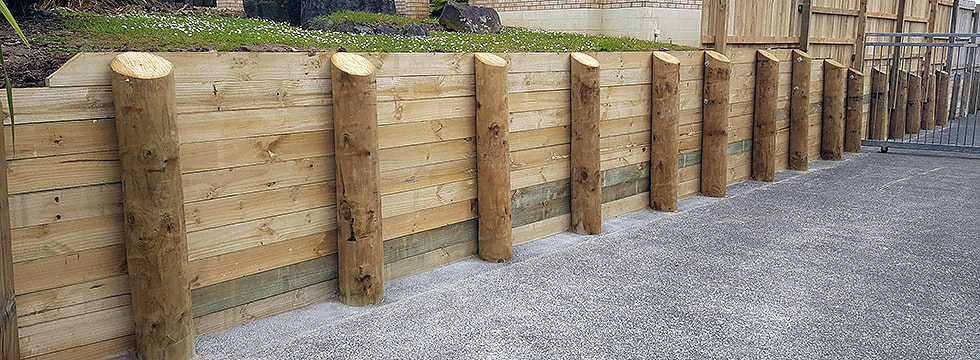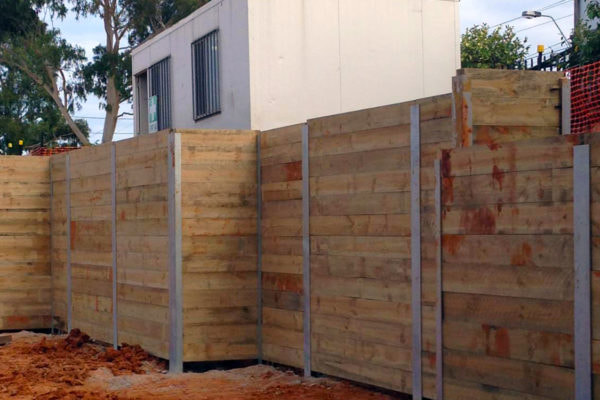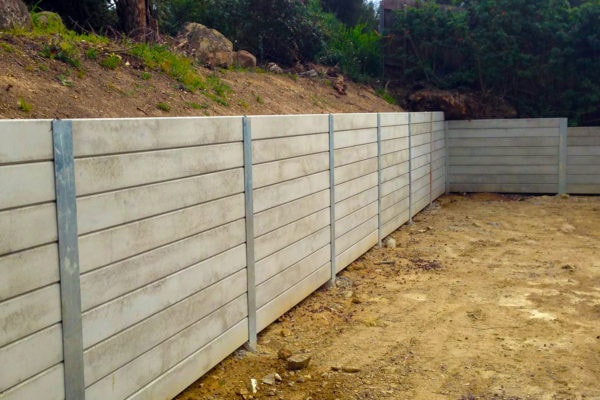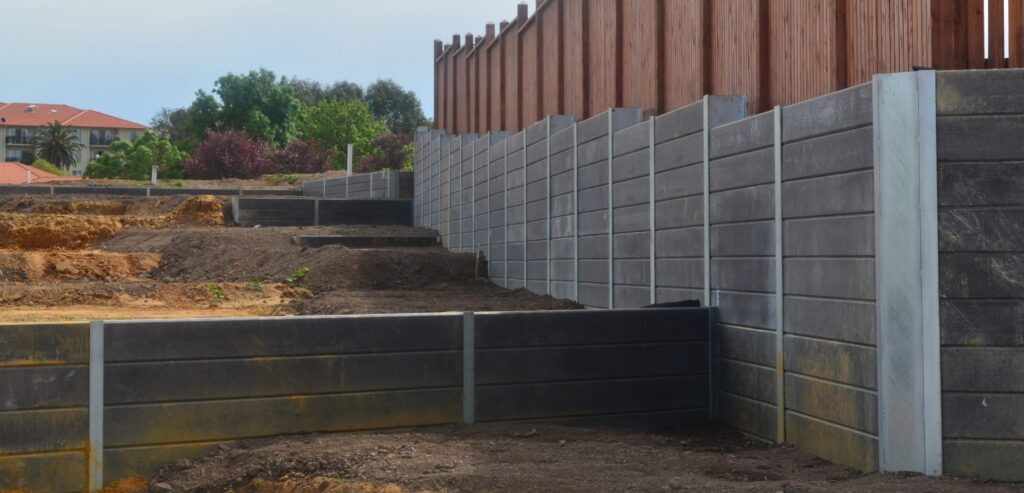Retaining walls, a vital element in landscaping, serve dual purposes – they offer practical functions and enhance aesthetic appeal. One particular material that has gained favor in the world of landscaping, especially in New Zealand, is timber. This guide dives deep into understanding timber retaining walls in New Zealand, discussing their popularity, costs, construction steps, maintenance, and more.
Understanding Timber Retaining Walls
Retaining walls, irrespective of their construction material, fulfill two primary purposes – they keep soil erosion in check and manage water runoff. They also help in transforming precipitous slopes into usable outdoor spaces. Timber retaining walls are built with wooden planks or logs interlocked or stacked and reinforced with steel rods or other hardware.
New Zealand, endowed with an abundance of timber resources, frequently uses timber for retaining walls. Timber is well-loved for its ability to integrate naturally with the landscape. Whether it’s for taming a hilly backyard or for creating elevated garden beds, timber retaining walls bring rustic charm along with functionality.

Why Choose a Timber Retaining Wall in NZ?
Timber retaining walls are a prevalent choice in New Zealand, and there are several reasons behind this preference.
Cost-Effective
Timber is typically more affordable compared to many other materials used for retaining walls such as concrete, stone, or steel. The lower cost makes timber a preferred choice for many homeowners and landscapers, especially for larger projects where the cost of materials can quickly add up.
Easy to Work With
Timber is a versatile material that’s relatively easy to work with. Its lightweight nature compared to materials like stone or concrete makes it easier to transport and handle during the construction process. Timber can be cut and shaped to fit a specific design or space, making it an adaptable solution for a variety of landscaping needs. This flexibility often appeals to DIY enthusiasts who can handle smaller timber retaining wall projects without requiring professional help.
Aesthetic Appeal
Timber has a natural, warm aesthetic that’s hard to replicate. A timber retaining wall can blend seamlessly into a garden or a natural landscape, adding a rustic charm that’s very appealing. With time, timber ages to a beautiful gray, further enhancing its visual appeal.
Sustainability
When sourced responsibly, timber is a renewable resource that has less of an environmental impact compared to other non-renewable building materials. New Zealand’s robust forestry sector ensures a continuous supply of sustainably sourced timber, making it a great choice for the environmentally conscious homeowner or landscaper.
Durability and Longevity
While timber may not be as long-lasting as concrete or stone, certain types of timber, especially when treated, can offer significant durability. Woods such as Radiata Pine, when treated, resist rot and pests, ensuring your retaining wall stands strong for years.
It’s worth noting that while timber retaining walls have many benefits, they also require regular maintenance to prevent issues such as rot, pests, and water damage. Nevertheless, with proper care, a timber retaining wall in NZ can be a functional, cost-effective, and aesthetically pleasing addition to any landscape.

Different Types of Timber for Retaining Walls in NZ
Timber used for retaining walls in New Zealand can vary, depending on factors such as budget, desired aesthetics, and durability needs. Here’s a closer look at some commonly used types:
Radiata Pine
This species is widely available in New Zealand and is often chosen for retaining wall projects due to its affordability. When properly treated, Radiata Pine exhibits good resistance against rot and pests, making it suitable for outdoor use.
Macrocarpa
Macrocarpa is a durable timber that displays natural resistance to decay, which means it can often be used untreated. It is another popular choice for retaining walls, primarily because of its rustic aesthetic and longevity.
Hardwoods
Though more expensive, hardwoods like Jarrah or Ironbark are used for retaining walls due to their impressive longevity and resilience. These species are extremely hard-wearing and have a high resistance to decay and pests. Their attractive, rich color also adds a sophisticated touch to landscape designs.
Treated Timber
In many cases, timber used for retaining walls undergoes treatment to increase its resistance to rot, pests, and moisture. This treatment enhances the lifespan of the timber, making it a practical choice for retaining walls.
Recycled Timber
Some people choose to use recycled timber for environmental reasons. This could include reclaimed wood from old buildings or fallen trees. It’s a sustainable choice that adds a unique, weathered look to your retaining wall.
When selecting timber for your retaining wall, it’s essential to consider the specific needs and conditions of your project. Some timber species might be better suited to certain climates or soil types than others. The size and height of your wall, as well as the amount of ground it needs to retain, will also factor into your decision.
Remember, while timber is a fantastic choice for a retaining wall in NZ due to its aesthetics, affordability, and workability, it does require regular maintenance to remain in good condition and to prevent decay and insect infestation. Choose your timber carefully to ensure it’s up to the task and will provide you with a durable, attractive retaining wall for many years to come.
Costs Associated with Timber Retaining Walls in NZ
The costs linked with timber retaining walls in NZ can be quite diverse. Factors such as the timber type and quality, the design and size of the wall, and whether you build it yourself or hire professionals, all play into the total cost.
As a rough guide, for a professionally installed timber retaining wall, one can expect to pay anywhere from NZD $250 to $500 per square meter, inclusive of materials and labor. If you possess the necessary skills and tools, undertaking the construction yourself can significantly bring down costs.
Steps to Build a Timber Retaining Wall
The construction of a timber retaining wall encompasses several steps:
Planning
Begin by determining the location and size of your retaining wall. Check local regulations as larger structures may require permits.
Preparation
Prepare the construction area by clearing any grass, rocks, or plants.
Installation
Commence the installation by digging a trench, placing your base timber, and installing the rest of the timber planks or logs. Secure each timber layer with appropriate hardware.
Backfilling
Once the wall is complete, backfill the area behind the wall with gravel for drainage and soil for planting.

Maintenance Tips for Timber Retaining Walls
Maintaining your timber retaining wall regularly will prolong its lifespan. Maintenance may include treating the timber every few years, routinely checking for signs of rot or insect damage, and ensuring that the drainage system is not clogged.
Pros and Cons of Timber Retaining Walls
When considering a timber retaining wall, it’s essential to understand the advantages and drawbacks that come with it. The following points outline the main pros and cons associated with timber retaining walls:
Pros
Aesthetics
One of the biggest appeals of timber retaining walls is their natural beauty. Timber can seamlessly blend into the landscape, giving a more organic and warm feel compared to materials such as concrete or brick. As it ages, timber often acquires a charming, grey patina that can further enhance its appeal.
Cost-Effectiveness
Timber is generally more affordable than stone, brick, or concrete, making it a cost-effective choice for retaining walls. Additionally, if you’re open to a bit of DIY, the installation of a timber retaining wall can be a less expensive proposition.
Easy Installation
Timber is relatively lightweight and easy to work with, making the installation process quicker and simpler than with heavier materials like stone or brick. This makes timber a popular choice for DIY enthusiasts.
Versatility
Timber is highly versatile. It can be cut and shaped into a variety of sizes and designs to create a unique look for your retaining wall. This makes it easier to tailor a timber retaining wall to suit specific landscape designs or requirements.
Cons
Durability
While certain types of timber can last a long time, particularly if treated, timber is generally not as durable as other materials like brick or concrete. Exposure to the elements can cause timber to decay over time, reducing its structural integrity.
Maintenance
Timber retaining walls require regular maintenance to stay in good condition. This includes treating the timber to protect it from rot and insects, regularly checking the wall for signs of decay, and potentially replacing parts of the wall as they age.
Lifespan
Even with excellent maintenance, a timber retaining wall typically has a shorter lifespan than walls made from materials like concrete or stone.
Environmental Considerations
While timber is a renewable resource, the process of treating timber can involve chemicals that are harmful to the environment.
In conclusion, while timber retaining walls offer many benefits, such as aesthetics and affordability, they do come with some drawbacks. It’s important to weigh these pros and cons to make an informed decision about whether a timber retaining wall is the right choice for your project.
FAQs
Radiata pine, owing to its availability and affordability, is a popular choice for timber retaining walls in NZ. Another preferred option is Macrocarpa because of its natural resistance to decay.
The cost of building a timber retaining wall in NZ varies, but for a professional installation, including materials and labor, it can range from NZD $250 to $500 per square meter.
Maintenance of a timber retaining wall involves treating the timber every few years, regularly checking for signs of rot or insect damage, and ensuring that the drainage system is not clogged.
Timber retaining walls are affordable, easy to handle, and aesthetically appealing. However, they are not as durable as some other materials and require regular maintenance to prevent decay.
Final Thoughts
Timber retaining walls provide a cost-effective and visually appealing solution for landscape management. While they necessitate some maintenance, their affordability and natural charm have contributed to their popularity in New Zealand. By understanding the various factors involved in constructing a timber retaining wall, you can create an outdoor space that is both beautiful and functional. Contact our Auckland retaining wall specialists today!

